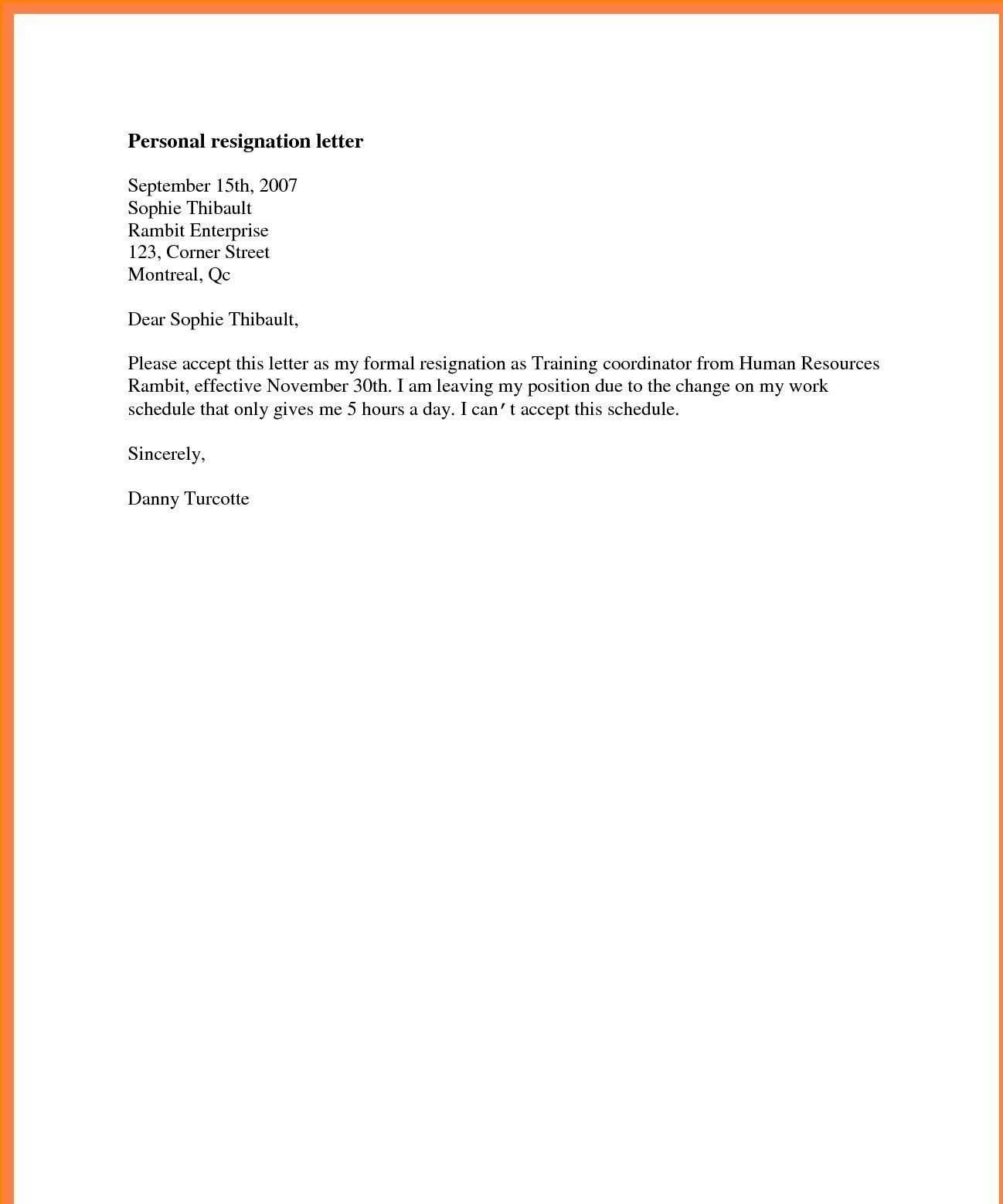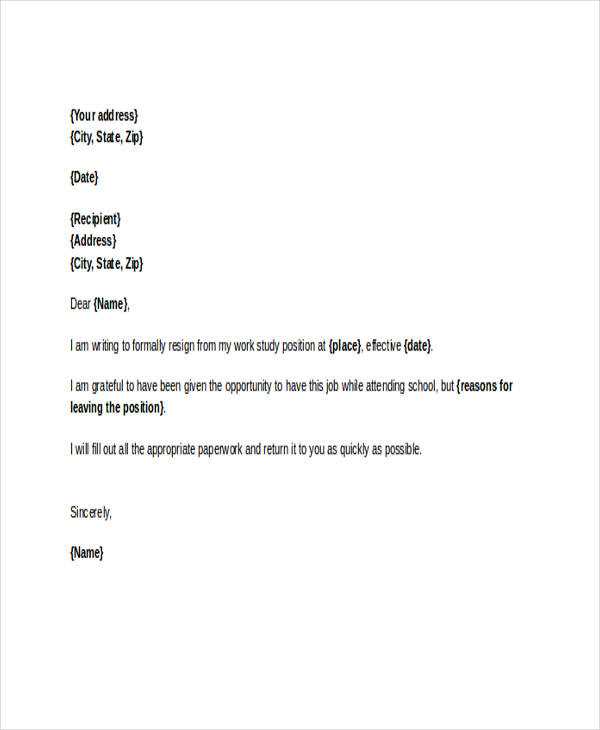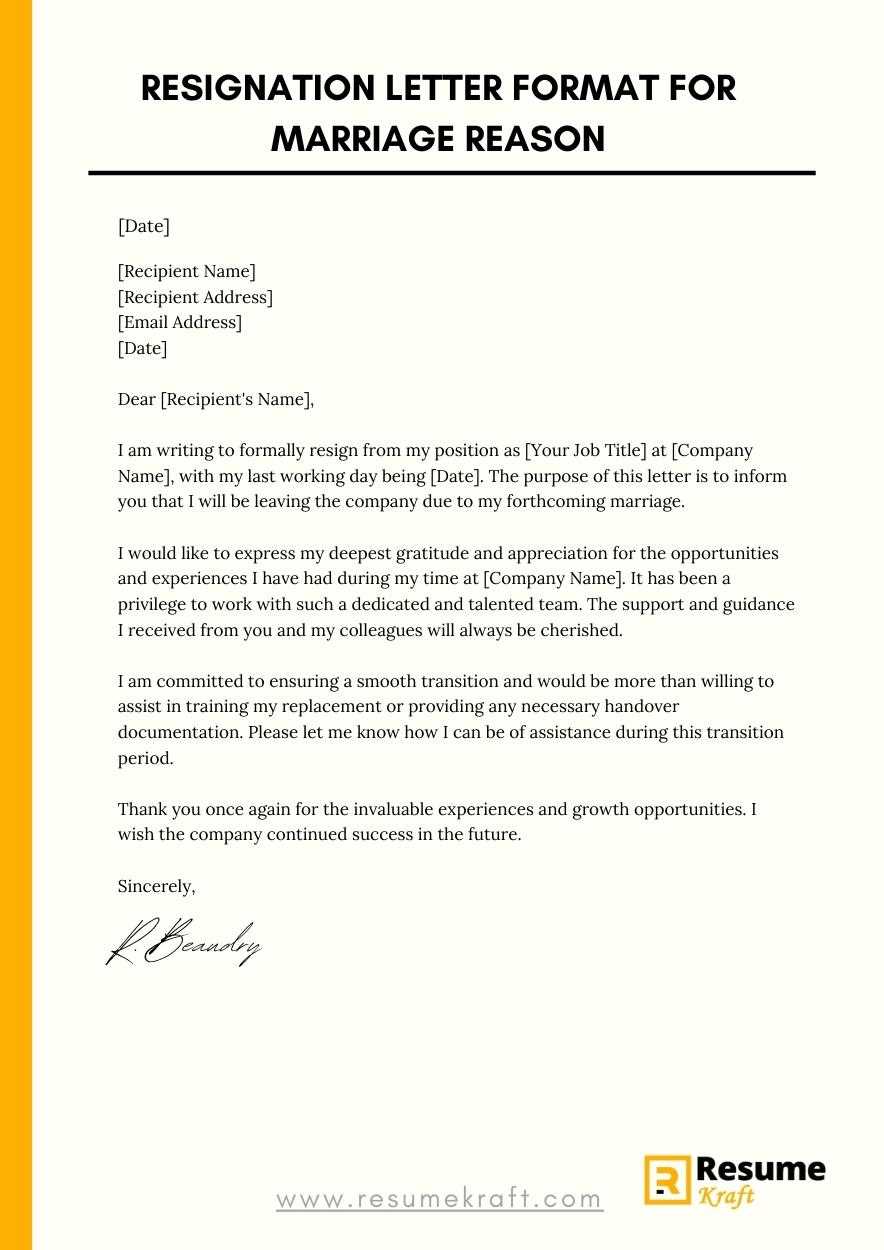Resignation Letter for Personal Reasons Template

Exiting a job due to personal circumstances is a significant decision that requires careful thought and professionalism. Communicating your departure in a respectful and clear manner can help you leave on good terms, preserving your reputation for future opportunities. Crafting a formal document for this purpose is essential to ensure your intentions are communicated properly.
Key Aspects to Include in Your Exit Notice

When preparing your formal announcement of departure, it is crucial to keep the tone professional, regardless of your reason for leaving. The content should convey your intent to leave and include necessary details like your departure date and any required transition plans.
- Statement of departure: Clearly state that you are resigning and specify your last working day.
- Polite tone: Maintain respect and appreciation for your time at the company, no matter the circumstances.
- Offer to help: Consider offering assistance in the transition process or training a replacement if necessary.
Example of a Professional Exit Notice

Here’s an example that captures the essence of what to include in your departure communication:
Dear [Manager’s Name], I would like to inform you that I have made the difficult decision to move on from my position at [Company Name]. My final working day will be [Date]. I appreciate the opportunities and experiences I have gained here and am grateful for the support I have received. Please let me know if I can be of any assistance during this transition period. Sincerely, [Your Name]
Avoid Common Pitfalls

While it is essential to be concise, avoid sounding abrupt or overly brief. It’s important to express your gratitude for the experience and leave on a positive note, even if your reasons for leaving are personal. Keep it simple, professional, and courteous.
Submitting Your Formal Notice

After drafting your exit communication, ensure it is delivered to the appropriate person, typically your supervisor or HR department. Opt for a professional delivery method, such as email or a printed version if appropriate for the situation. Double-check your details before sending to avoid mistakes.
How to Write a Formal Notice of Departure
Why Personal Circumstances Justify Leaving a Job
Essential Elements of an Exit Notification
Sample Notification for Voluntary Departure
Common Errors to Avoid in Exit Communications
How to Submit Your Notification Professionally
When you decide to leave your current position, drafting a professional notification is a key step. This communication should clearly express your intent to depart while maintaining a respectful tone. It’s important to handle the process with care to ensure a smooth exit and preserve your professional reputation.
Leaving a job due to personal matters is a valid choice, and it’s essential to convey this appropriately. While the reasons behind your decision may be private, you should still aim for professionalism in your message, keeping it concise and polite. A well-written announcement allows you to exit the company without any negative implications, no matter the personal circumstances involved.
In your formal notification, there are several crucial points to include. Firstly, specify the exact date of your departure. Acknowledge your appreciation for the opportunity, and offer assistance during the transition period. Your tone should remain courteous and neutral, ensuring there’s no room for misunderstandings.
Below is an example of how to approach your voluntary departure message:
Dear [Manager's Name], I am writing to inform you of my decision to step down from my role at [Company Name], effective [Date]. I truly appreciate the experiences I've had here and the support I've received during my time with the team. Please let me know how I can assist with the transition process. Sincerely, [Your Name]
There are common mistakes that people make when preparing their departure communication. It’s important to avoid being too vague or overly detailed about your personal situation. Stick to the facts, remain respectful, and avoid using negative language or focusing on any conflicts you may have had at work. Keep your message brief but informative.
Once your notification is ready, submit it using the appropriate channels. Depending on your company’s culture, this could mean sending it via email, handing over a printed version, or submitting it through a formal HR portal. Double-check for any errors or omissions before sending it to ensure a professional presentation.